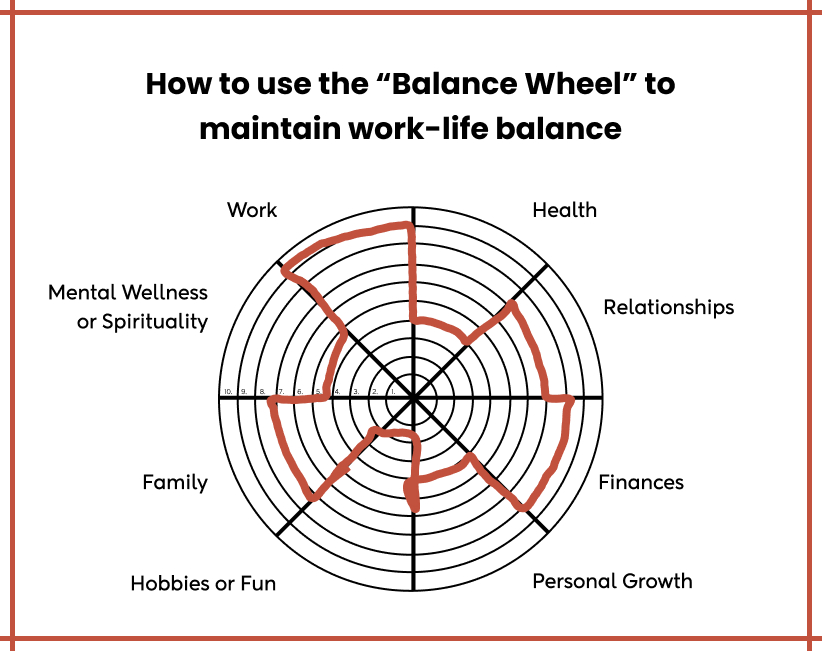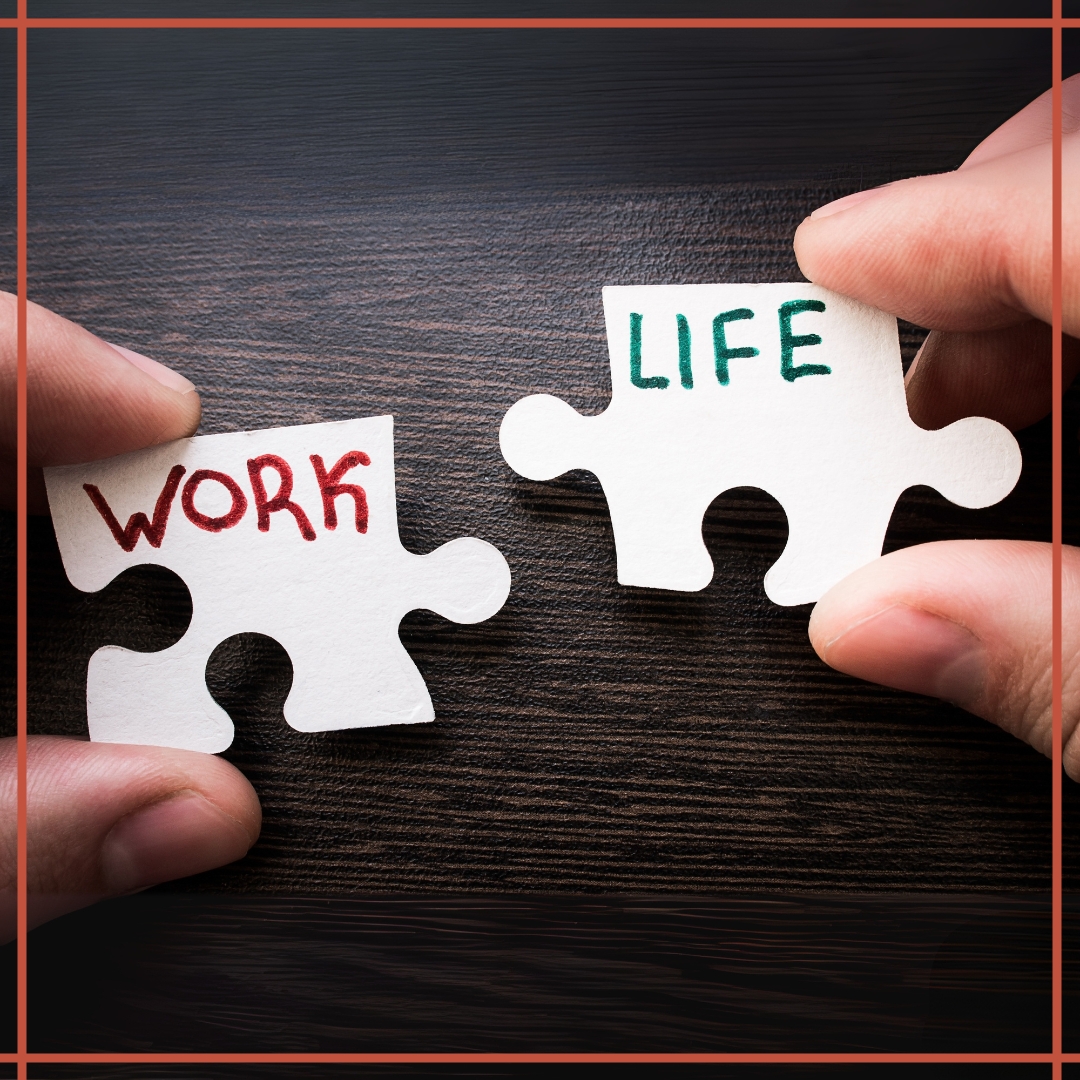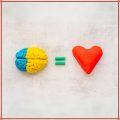One of the most common struggles faced by managers is being constantly busy yet feeling emotionally drained and disconnected. Even when every task on your list is checked off, you still feel overwhelmed and oddly unproductive.
That’s because traditional to-do lists, while helpful for organizing tasks and tracking progress, aren’t built to maintain balance. They focus on short-term wins such as deadlines, deliverables, and urgent work, but often ignore what truly sustains you in the long run: relationships, health, creativity, and mental peace.
You’ll rarely find things like “call a friend” or “take a walk” on a typical task list. Over time, this imbalance silently pushes out essential parts of life, leading to burnout and dissatisfaction, even when you’re being “productive.”
If you’ve ever wondered why your well-managed days still feel misaligned, you’re not alone.
In this article, we’ll explore a better alternative: the Balance Wheel, how it works, why it’s more sustainable than a checklist, and how to use it to create a more fulfilling version of work-life balance on your own terms.
Read more: Find out your team’s productivity sweet spot to avoid boredom and burnout in a workplace.
What Is the “Balance Wheel”?
Balance wheel, also known as the wheel of life, is a self-coaching tool that can help you maintain a healthy work-life balance. I bet most of you haven’t even heard about this term, but if you are serious about creating balance in your life, this could be the missing link.
Think of this way: if your to-do list tells what you are doing, the Balance wheel shows you where your time and energy are going across all areas of your life–not just work.
The balance wheel gives a bird’s-eye view by dividing life into categories like-
- Work & Career
- Health & Wellness
- Relationships
- Personal Growth
- Finances
- Fun & Creativity
- Spirituality or Mental Wellness
- Family or Community
Why the “Balance Wheel” works (and your to-do list doesn’t)
Everyone uses to-do lists because they are important for productivity. These lists help you stay on track, remember deadlines, and give a list of tasks effectively. But when it comes to work-life balance, relying on these lists is just not enough.
To-do lists are focused on urgency, not alignment. They reward activity over intentionality, which pushes from doing what matters the most. This left us feeling exhausted and emotionally detached.
Checking a list off might feel like an accomplishment for a little while, but it starts a loop of constant doing. Worse, traditional to-do lists don’t make space for your emotional well-being, relationships, or long-term clarity, and give you less time for self-reflection and long-term clarity. You may complete all the tasks, but skip the other important parts of life.
To make it worse, these lists don’t account for any mental toll, emotional well-being, or relationships. But the “Balance Wheel” offers a different approach; it is about how fulfilled and aligned you feel in areas that matter most in your life.
Let’s break down the difference:
| To-do list | Balance wheel | |
| Focus | Action & urgency | Awareness and alignment |
| Outcome | Task completion | Personal fulfillment |
| Drives | Busyness | Intentional living |
| Metric | Done/ not done | Satisfaction (1-10 scale) |
The balance wheel works because it shifts your mindset from reactive to proactive. It helps you recognize which areas of your life are thriving, and which one needs nurturing.
Read more: Explore the signs that a workplace culture needs to change and key strategies for success.
How to use the “Balance Wheel” to maintain work-life balance
Building a real work-life balance is not a big task; it just requires a moment of reflection. The balanced wheel can help you maintain it, as it is a simple yet powerful tool.
The following are some of the steps that show you how to use the Balance Wheel:

Step 1: Choose 6–8 core life areas
Pick categories that matter most to you. These might include:
- Work
- Health
- Relationships
- Finances
- Personal Growth
- Hobbies or Fun
- Family
- Mental Wellness or Spirituality
Step 2: Rate each area from 1–10
Ask yourself: “How fulfilled do I feel in this area right now?”
Don’t rate based on how much time or effort you’re putting in, focus on your level of satisfaction and balance.
Step 3: Plot your scores
Draw a circle and divide in into segments for each category.
Mark your rating (1-10) for each one, then connect the dots. This creates your personal “balance wheel.”
Step 4: Analyze the shape
Is your wheel smooth and even, or bumpy? A lopsided wheel reflects areas of neglect or overload.
You’re not aiming for perfect 10s—just for balance and symmetry.
Step 5: Choose one or two focus areas
Don’t overwhelm yourself by trying to “fix” everything. Select one or two low-rated areas to gently improve.
What’s missing here?”
“What would make me feel more fulfilled?”
Step 6: Plan your week accordingly
Align your to-do list with what needs nourishment. Ask:
- “What one action could lift this area by one point?”
- “How can I create time or space for that action this week?”
Incorporate that action into your calendar or to-do list—intentionally.
Conclusion
To conclude, to-do lists keep you busy; the Balance Wheel keeps you balanced. By checking in on life areas and not just tasks, you align your energy with what truly matters.
Start with one small shift, reflect monthly, and prioritize what brings fulfillment. Don’t just check boxes, check in with your life as well.























No Comments